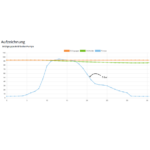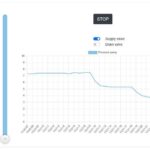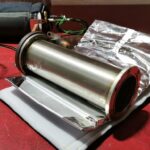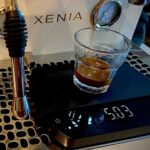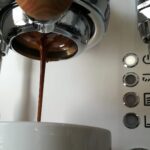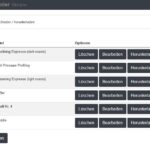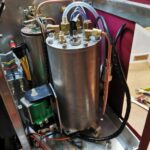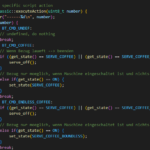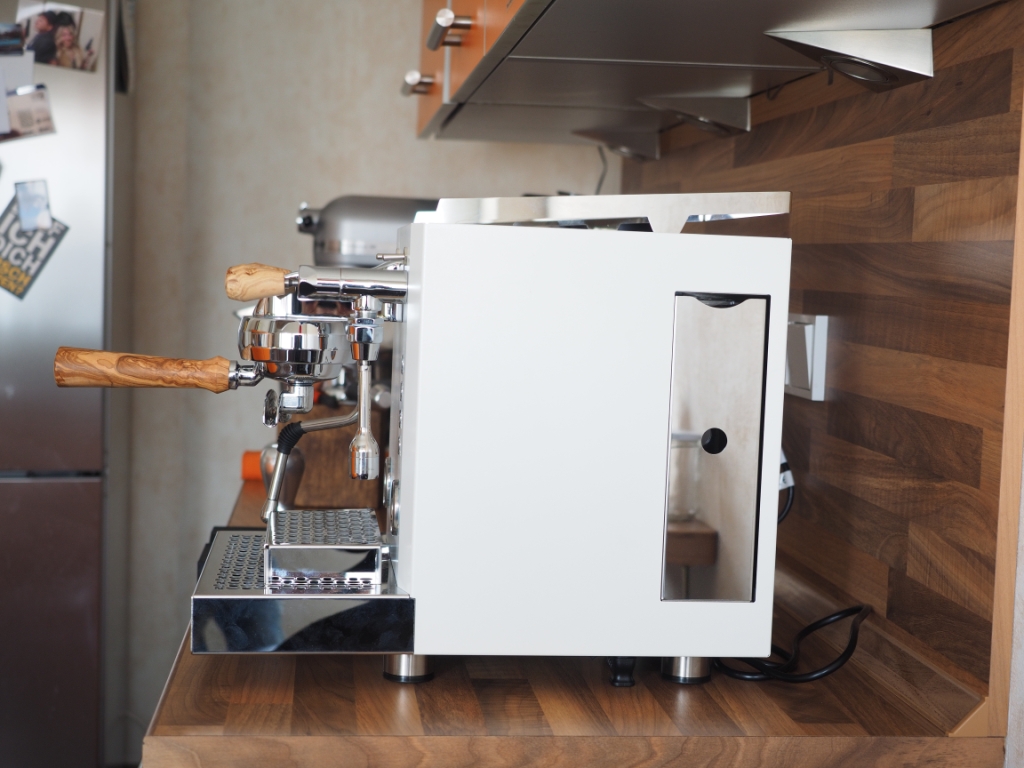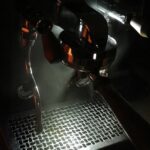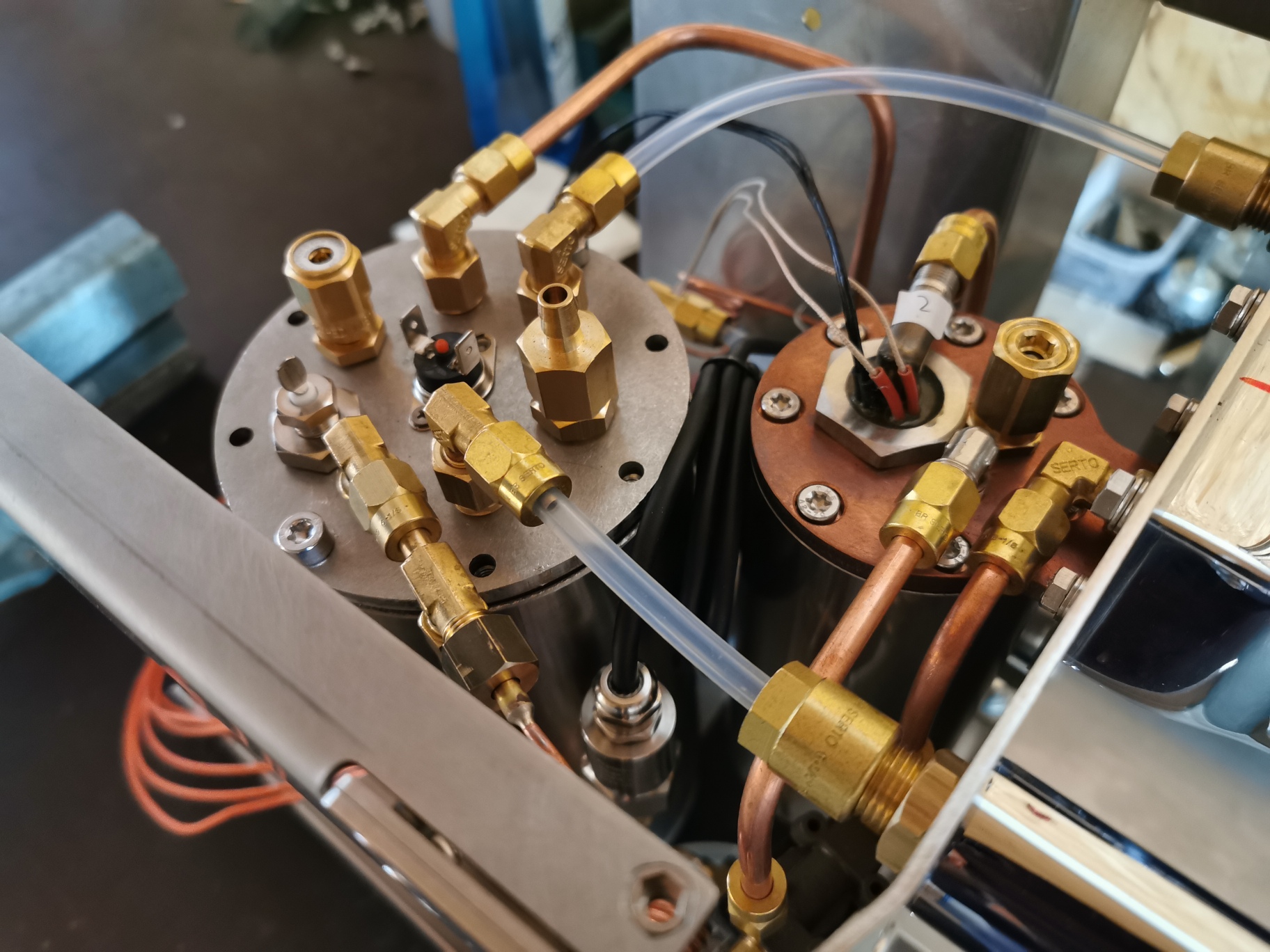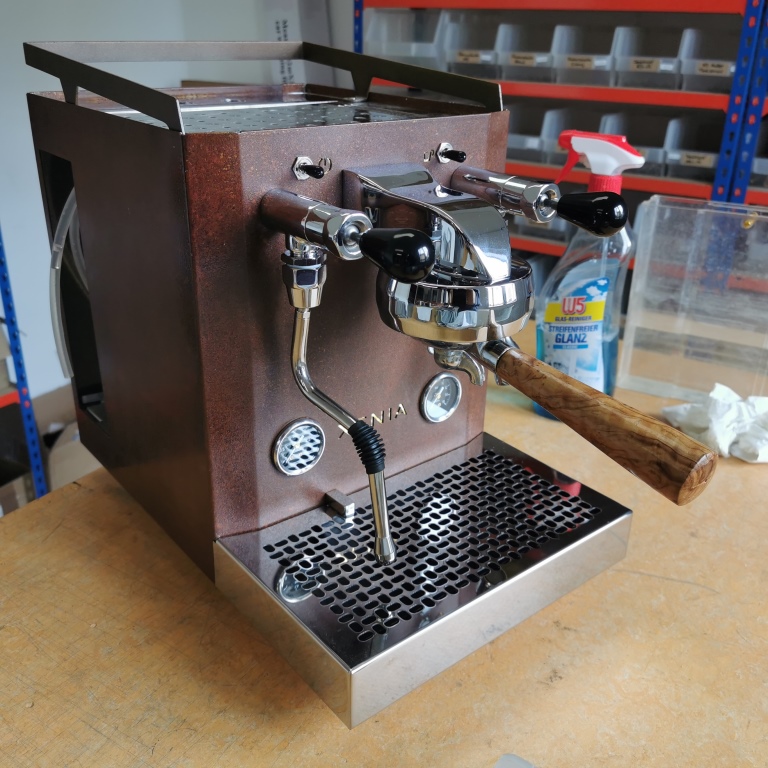
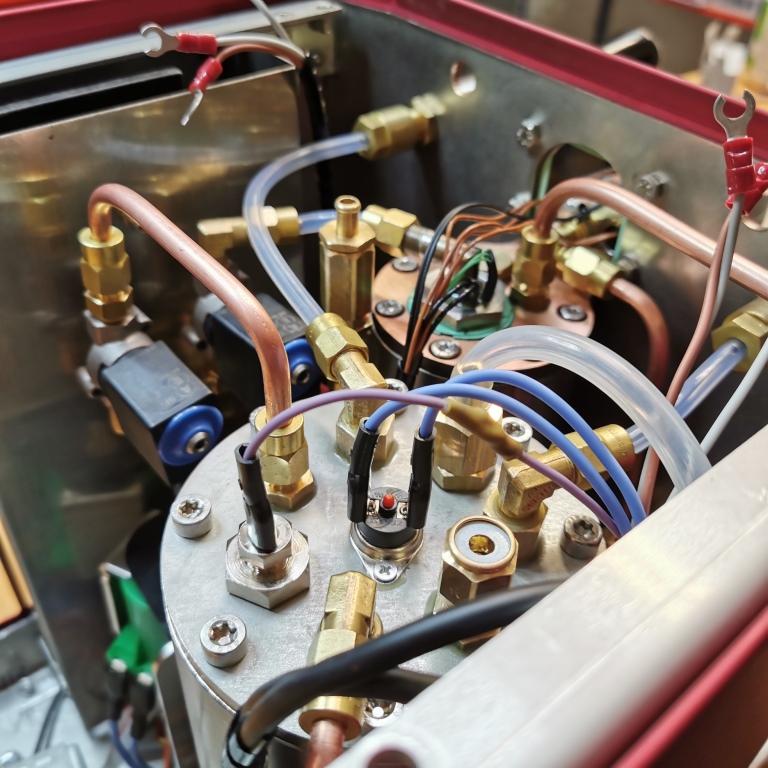
The machine
Our dual boiler Xenia espresso machine has been equipped with a lot of modern technology. In addition to numerous pressure and temperature sensors, two processors are used. As a special feature this machine has an optional three-channel power controller with which the heaters and pump are set precisely to one temperature (or flow rate) - similar to a dimmer in lights. To ensure that these various components work together perfectly, both processors have sophisticated firmware and continuously exchange relevant data with each other. The customer can access the many configurations offered by this machine via a web interface. Why did we choose a concept based on two boilers with so much technology and not, for example, two thermoblocks or one thermoblock and one boiler? Many people think that the sophisticated control system means you have to build a thermoblock system. However, there are very good reasons for designing a machine with multiple boilers.
To ensure that these various components work together perfectly, both processors have sophisticated firmware and continuously exchange relevant data with each other. The customer can access the many configurations offered by this machine via a web interface.
Why did we choose a concept based on two boilers with so much technology and not, for example, two thermoblocks or one thermoblock and one boiler? Many people think that the sophisticated control system means you have to build a thermoblock system. However, there are very good reasons for designing a machine with multiple boilers.

Brewing temperature
There are several technical configurations that make a good espresso machine. Each configuration has its specific strengths that a manufacturer can choose from. Since the development period of the original Xenia with its special heat exchanger (which is very similar to a thermoblock), we know from testing that it is not easy to precisely control an espresso machine while it is pulling an espresso.
Keeping the temperature stable during the pull and compensating for fluctuations in heat is quite a challenge because the flow rate is relatively high and it varies. Flow rate is a majyor factor in how much heat the water absorbs. Since it changes during the espresso pull, it naturally does not have a fixed value. For example, it is higher until the water hits the coffee grounds and then it becomes lower due to the resistance that develops at the shower screen and filter basket. Secondly, it varies depending on the filter basket used: with a double-serving basket it is twice as high as with a single basket. The third factor that influences the flow rate is the degree of grinding and how long the ground coffee or parts of it have been in the grinder. It also influences the brewing process. In principle, the roast itself can also be an influencing factor, because light roasts tend to have different flow rates during brewing.
The challenge is how to manage these variables and if it is possible to detect and react to them fast enough. For example, when cold water enters a thermoblock (or heat exchanger), it will cool down part of the thermoblock, so that the rest of the water won’t get heated as much. If the software can only switch the thermoblock on or off, then you will inevitably end up with temperature fluctuations due to the control system, despite all the sophisticated technology.
Of course, there are solutions. In the Xenia's two-circuit brewer, we use the mass of the brew group to act as a second thermoblock and achieve a more stable temperature via a tube in the channel. However, if you try to solve this using only electronic hardware and software, it can be quite complicated or even impossible.
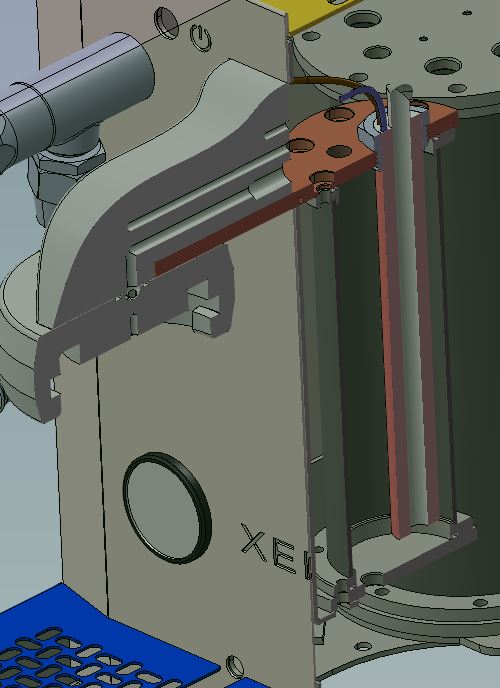
To have a machine that is flexible and can reliably maintain the temperature during the espresso pull despite all the variables, we opted for the more complex approach with two boilers. Here, the relatively small brewing boiler has a special heater inside which the water is pumped to the bottom of the boiler. This way, the water is already heated before it enters the boiler and cannot cause large fluctuations in the temperature when it is drawn.
Another component in this concept is the optional power controller which constantly sets the brew group and the brewing boiler to 1/10 of the degree of the selected temperature. The power controller can be thought of as a triple dimmer (with PID logic) that can regulate the power of the respective consumer (heater/pump) from 0-100%.
The advantage of this solution is obvious; when the pull begins, you can be certain that the entire machine is already at the target temperature and thus the draw water is also at the exact temperature that you have set via the web interface.
Our unique design with its dual boiler and controlled brewing group has advantages over dual boilers with an E61 group. With a dual boiler E61 machine, the groups are not directly controlled, and therefore the set and displayed temperature are only estimates and can never be accurate.
Similar to our original Xenia with a heat exchanger, we focus on the highest consistency in the espresso pull and use technology to enable control and flexibility.
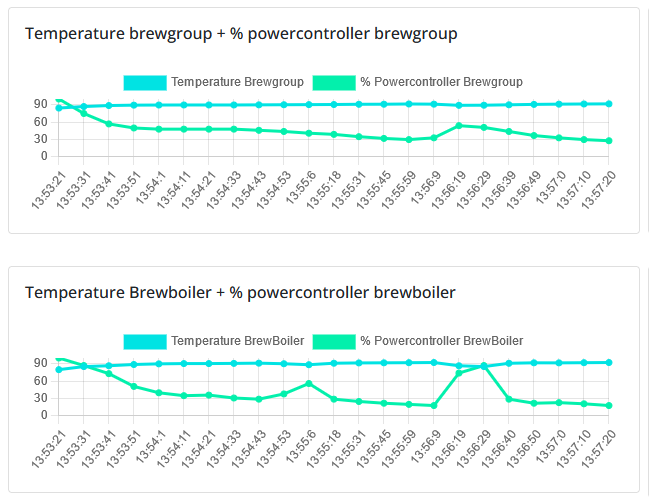
Steam
With a dual boiler espresso machine the steam boiler is always ready and immediately available when the valve is opened, unlike a thermoblock machine where steam is made by injecting water drop by drop into a thermoblock.
Not only is a dual boiler machine quieter, but the steam is 100% available from the start and easy to control via the valve levers.
If the optional power regulator is installed, you can increase the pressure up to 2 bar via the web interface, which among other things leads to an increased flow speed and this then shortens the time it takes to froth the milk.
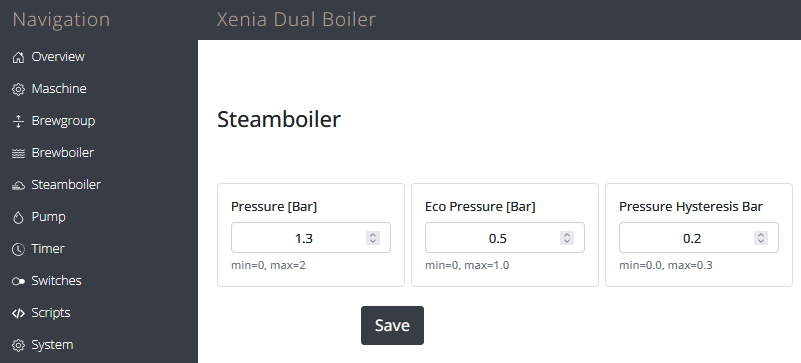
Of course, a system with so many advantages always has challenges that need to be solved. This is of course also the case with the dual boiler version of the Xenia. The special heaters and the control unit are expensive. The software and firmware were complex to create (as of early 2023: around 40,000 lines of program code).
However, the new software is designed to be very flexible and has many features that can be used in future espresso machines. Because of this, it only adds a small amount to the total production costs. For the high-priced components (such as boilers and heaters), we are able to purchase in bulk to get a reasonable cost from our suppliers.
Of course, it also tends to cost more energy to bring two boilers up to temperature than one or two thermoblocks.
However, this disadvantage can be significantly mitigated. Both boilers have good insulation, which can also have a positive effect on user behaviour. A machine that starts quickly anyway and that keeps the heat for a relatively long time after being switched off is quickly ready for operation again when it is switched on again. This automatically avoids the temptation to simply let the machine run until the next shot of espresso or to switch it on prematurely. This is supported by the integrated switch-on timers with two switching processes per day, which can even be programmed to start with or without a steam boiler.
A special feature is that you can spontaneously start the machine with or without a steam boiler remotely via VPN and the web interface, so that it is just warmed up when you get home.
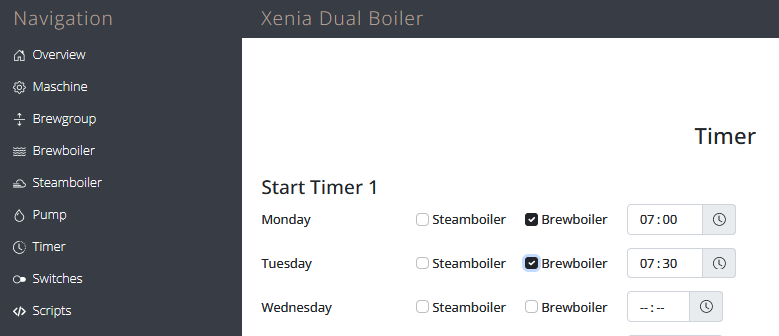
The production has started in January 2023. The measurements and tests show that the system is very efficient. As you can see from the measurement curves, setting and maintaining the set temperatures works quite well–in particular, the temperature of the brew group does not change at all during brewing – which means that the water from the boiler is kept at the right temperature. The group itself does not need to reheat or only to a small extent with a heavily throttled output.
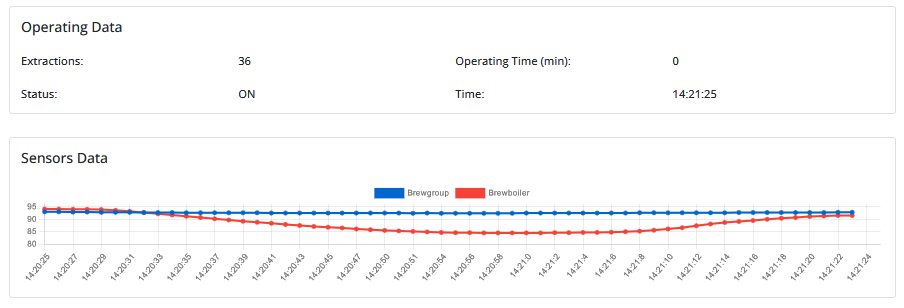
In parallel, the recorded pressure profile shows a slow increase and an even slower decrease during extraction. This is controlled by a special script.

In addition to all these advantages, the dual boiler version of the Xenia has the positive properties that have made the 2-circle version of the Xenia very popular: The really fast heat-up time and the tank slide that can be inserted from the side are just two of many special features. More about this in the other articles on this website.

